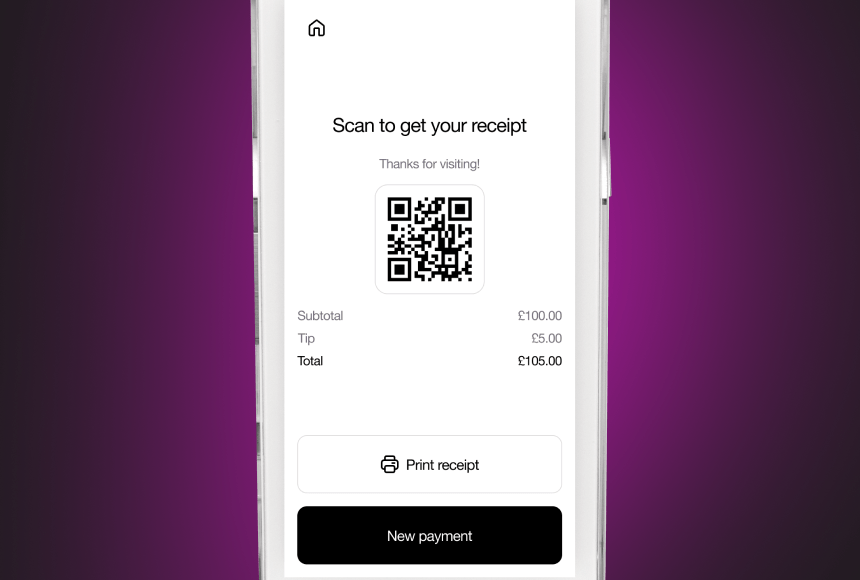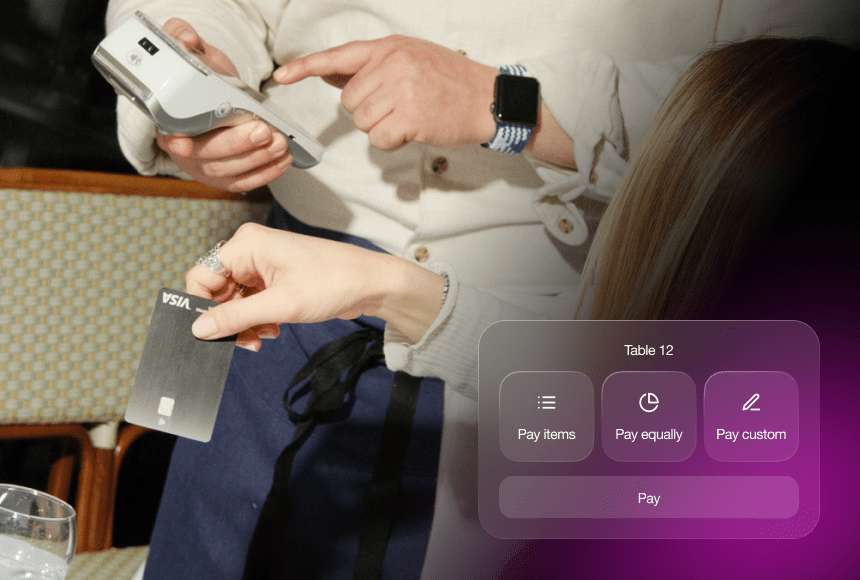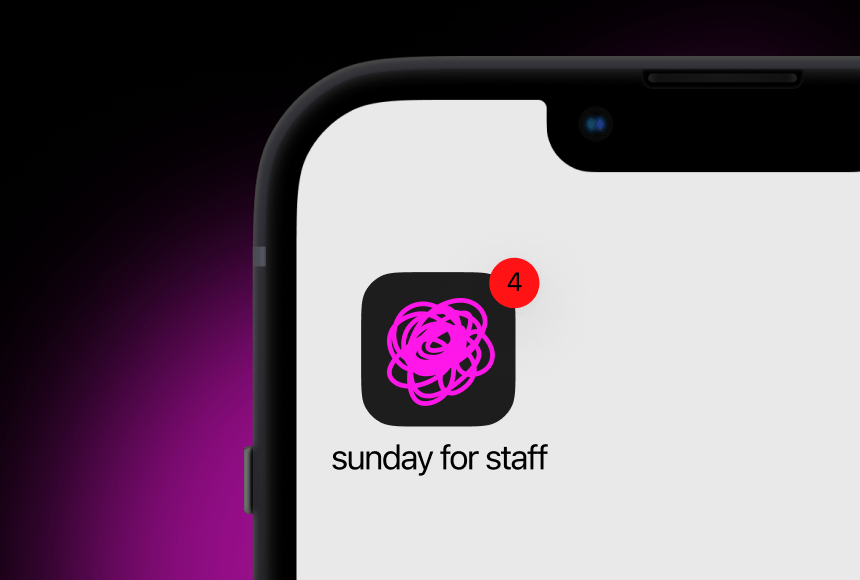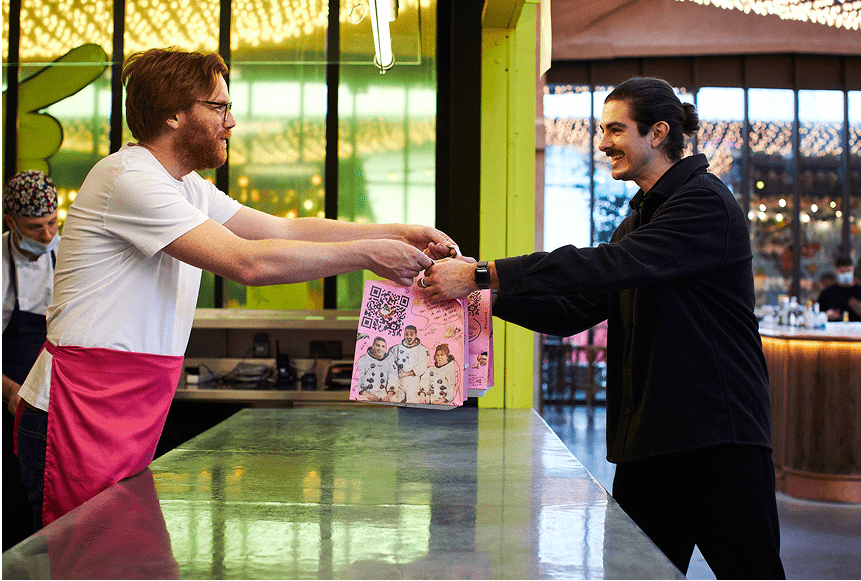
The Quiet Rise of QR Menus in Britain’s High-End Restaurants
A New Twist on Tradition
When you think of Michelin-starred dining, you might picture flawlessly plated dishes served under shimmering lanterns, with a maître d’ quietly orchestrating an unforgettable evening. Every detail is carefully curated, from the amuse-bouche to the table linens. Yet, recently, an unexpected technological twist has begun to weave its way into these venerable dining rooms: the humble QR code. Yes, that small, pixelated square—once reserved for quick marketing scans—has now found a home in some of the UK’s most prestigious and historic restaurants.
Why are these temples of haute cuisine—including multi-starred establishments—experimenting with what could be seen as a simple piece of tech? Quietly, many chefs, restaurateurs, and sommeliers are discovering that the benefits of QR menus stretch far beyond convenience. In this article, we’ll explore the reasons behind this subtle digital shift and how you, as a restaurant owner, can harness QR menus to provide a more seamless, personalised experience for your guests. We’ll look at the pitfalls, the perks, and why even the world’s most demanding diners are coming to appreciate the advantages of scanning a code.
Why QR Menus Appeal to High-End Dining
For those who work in or own fine-dining establishments, any new trend is regarded with a healthy dose of scepticism. It’s not that we’re averse to innovation—quite the contrary. But we want to ensure that every new addition enhances, rather than detracts from, the overall sense of refinement. Enter QR menus, which are gradually becoming part of the Michelin-starred toolkit for these reasons:
- Flexibility: Printing multiple versions of a menu is expensive and time-consuming. QR menus let you update prices, ingredients, and tasting menus instantly, without worrying about costly reprints or the environmental impact of paper.
- Cleanliness & Safety: Although sanitation has always been paramount in gourmet dining, recent health concerns have forced every restaurant to up its game. QR menus reduce shared surfaces, reassuring guests that you’re taking hygiene seriously.
- Storytelling: A digital menu has limitless space to give dish details, wine pairings, or the story behind your locally sourced produce. Going beyond the printed word, these added narratives can enrich your diner’s experience.
- Speed & Efficiency: Let’s face it: in some high-end places, convenience might not be the first consideration. But that doesn’t mean diners want to wait ages for a menu or the bill. QR technology accelerates both processes.
- Environmentally Friendly: Sustainability continues to be a key concern for guests and critics alike. By rethinking your printed assets, you show a commitment to reducing paper waste.
It’s easy to see why the practicality of QR codes is causing a gentle ripple among the most refined corners of the culinary world. But how exactly are Michelin-starred restaurants putting these pixelated squares to work?
Real Stories from the Culinary Frontline
Let’s take a hypothetical example. Imagine you run a two-star restaurant in the heart of London, where you serve modern British cuisine with an inventive twist. Your guests typically choose between a seasonal tasting menu or an à la carte option. In the past, you might have faced these challenges:
- Last-minute ingredient substitutions that forced you to reprint entire sets of menus.
- Requests for vegetarian or allergy-friendly options that required consultation with the kitchen and a rummage back to the printing staff for updated menus.
- Struggles to share your brand’s culinary philosophy—farm visits, local suppliers, or your unique fermentation techniques—in just a few words on a printed page.
With QR menus, these hurdles become manageable. By scanning a code placed discreetly on the table, your diners are ushered into:
- A dynamically updated menu that accounts for any last-minute changes.
- A separate page listing dietary requests, including clickable pop-ups describing how each dish accommodates various dietary needs.
- Interactive elements such as short videos from your local farmers, or behind-the-scenes glimpses of your fermentation cellar.
This interactive, living menu brings guests closer to the story of their meal. And, crucially, it does so without sacrificing the refinement that Michelin-starred establishments pride themselves on.
The Power of Discreet Service
British fine dining has always championed unobtrusive yet attentive service. Pairing your front-of-house finesse with QR codes can free servers to provide more personal interactions, rather than merely handing out menus or reciting specials. For diners who relish the charm of human hospitality, nothing changes except for one subtle detail: instead of flicking through a menu, they simply scan a QR code with their phones. This transformation can even let staff focus on:
- Upselling exclusive wine pairings without seeming pushy.
- Interacting with guests to discuss gastronomic history, share cooking techniques, or address dietary concerns more precisely.
- Ensuring water glasses are topped up and each diner’s comfort is paramount, rather than running to fetch a new printed menu for each adjustment.
In short, QR menus can shift your team’s energy toward creating memorable, one-on-one experiences.
Overcoming the “Tech-Wary” Image
Of course, technology in high-end dining has historically come under scrutiny. Critics argue it risks cheapening the experience, turning a once-enchanted evening into a mere novelty. But QR menus—especially when integrated with minimal fuss—rarely feel out of place. Here’s why:
- Using a QR code is almost second nature for most diners today. It doesn’t take deep technological know-how.
- Cell phones are ubiquitous. Even in the hush of a Michelin-starred setting, glancing at your phone for a well-designed digital menu seldom disrupts the ambience.
- The digital design can blend into your restaurant’s overall aesthetic. You can match brand colours, fonts, and visuals to ensure the menu feels like a cohesive part of your identity.
- You can keep physical menus as an option if you have guests who prefer the traditional approach.
The key is tasteful implementation. A small card with a discreet QR code, or even a single code elegantly printed on the table setting, can be more refined than handing over a paper menu that’s seen better days.
Instant Payment & Google Reviews: Elevating Guest Engagement
Self-checkout might sound like sacrilege in fine dining, but a streamlined payment process can actually boost guest satisfaction. With an integrated digital solution—like the one offered by sunday, which includes a QR-based system—diners can request the bill the moment they desire and complete payment via their phones. This frees your staff from running receipts and re-checking calculations, allowing them to focus on meaningful interactions.
Moreover, digital solutions aren’t limited to speed; they can also prompt guests to leave a review immediately after paying. Modern diners, especially in the UK, pay close attention to online ratings before booking a table. A gentle nudge toward posting a quick Google review often leads to more feedback, which can translate into a stronger digital presence.
Additionally, built-in tipping suggestions on the payment screen often raise tip percentages. The diner, in a pleasant mood after a fulfilling meal, is more likely to press that recommended tip button rather than doing complicated mental arithmetic.
Advantages Beyond the Table
Beyond menu flexibility and customer convenience, QR codes open the door to a wealth of data. For instance, you can track which dishes guests clicked on the most, how long they spent exploring specific items, or if they navigated to your dessert page at all. This data can inform important decisions:
- Which new dishes spark interest and deserve a permanent spot on the menu.
- What vocabulary resonates best with your diners—do they prefer “cream of celeriac” or “purée of roots and spices”?
- How to structure your menu to encourage orders of high-margin items.
While fine dining is an art, it also needs to be commercially viable. By harnessing this data, you can continuously refine your offering to strike that delicate balance between running a profitable business and providing an unforgettable gastronomic adventure.
Getting Started: Best Practices for Introducing QR Menus
Tempted to give QR menus a try in your restaurant? Here are a few best practices to ensure your transition is smooth and well-received:
- Subtle Setup: Place a small, elegant card on each table with a discreet QR code. Consider providing a separate physical menu upon request, especially for guests less comfortable with smartphones.
- User-Friendly Interface: Work with a web designer or a specialised platform to ensure the digital menu loads fast, has clear navigation, and matches your brand style. Nothing ruins the experience quite like a slow-loading page.
- Train Your Team: Make sure your staff know how to guide diners through scanning the code. This should be second nature for them so they can help anyone who needs assistance, without making a scene.
- Highlight the Story: Leverage the limitless digital space. Include short anecdotes about your produce, the history of each dish, and the reasoning behind wine or tea pairings.
- Promote Food Safety & Sustainability: Outline how QR menus reduce waste and keep surfaces contact-free. Guests often appreciate these gestures, especially in a post-pandemic world.
The Human Touch: Balancing Tech with Hospitality
Naturally, Michelin-starred dining is about more than just scanning a code. The entire enterprise revolves around comfort, taste, ambiance, and personal connection. So you might wonder: does introducing a smartphone into the dining ritual undermine that sense of pampering? Not necessarily.
Think of a well-placed QR menu as a sous-chef of the front-of-house team. It handles the mundane tasks—presenting the menu, processing payments, highlighting specials—so your staff can do what they do best: engage in meaningful conversations with guests, ensure top-notch service, and solve unique requests. It’s all about using technology as a supplement, not a replacement.
Case in Point: A Hypothetical Example from the North of England
Consider a Yorkshire-based restaurant known for its local produce and seasonal tasting menus. A month ago, they quietly introduced QR codes on each table. The response? Guests loved the additional content—especially behind-the-scenes videos of suppliers harvesting fresh vegetables from the farm next door. Staff reported being able to dedicate more time to explaining the nuances of each course, and crucially, they noticed an uptick in acceptance of suggested wine pairings. One server observed:
“The guests already have their phones out. Once they see the wine list is just a tap away, they often explore it more thoroughly and find pairings they might have overlooked in a traditional paper menu. It’s been brilliant for upselling special vintages.”
This anecdote illustrates how QR menus can enhance personalised attention rather than replace it.
Common Missteps to Avoid
While the potential is huge, rolling out a QR menu doesn’t guarantee success. Some common missteps include:
- Low-Quality or Unreadable Codes: Ensure your codes are large enough, well-printed, and tested from various phone cameras. A smudged or pixelated code can be frustrating for guests.
- Poorly Designed Digital Menus: If your digital menu is cluttered with pop-up offers or confusing tabs, guests will quickly revert to the printed version—or become annoyed.
- Forgetting the Narrative: Simply listing dishes digitally might not be enough to captivate diners. Use the opportunity to tell a story, highlight your brand, and invite people deeper into your culinary world.
- Insufficient Staff Training: A staff member who can’t troubleshoot the code or navigate the digital interface reduces confidence among guests.
By avoiding these pitfalls, you can help ensure a seamless experience that preserves—or even elevates—your restaurant’s sense of exclusivity.
Scanning Into the Future
What’s next for QR technology within Michelin-starred establishments? There’s plenty of potential road ahead. Some restaurants are experimenting with advanced features, such as:
- Custom Wine Pairing Tools: Scanning a code that suggests the ideal wine for your chosen dish based on your personal flavour preferences, covering everything from dryness to tannin levels.
- Virtual Reality (VR) Experiences: Picture this: you scan a code, put on AR (augmented reality) glasses, and watch an animation of your dish’s ingredients growing in the local region. While it may sound futuristic, it’s not entirely far-fetched.
- Real-Time Feedback Loops: Enabling diners to rate a course the moment they finish, giving chefs immediate insight into which elements were most memorable.
Unsurprisingly, the progress of QR menus will continue to be subtle, reflecting the understated elegance associated with fine dining. But as diners’ comfort with technology grows, what feels daring today may soon become the gold standard.
Integrating QR Payments and the Role of sunday
At sunday, we’ve seen how restaurant owners—particularly those operating in the higher echelons of dining—hesitate to add anything that might detract from their well-polished service. Yet, once they experience how seamlessly an integrated QR solution streamlines payment, encourages tipping, and consolidates the entire dining experience, they often find it hard to imagine returning to traditional methods.
The ability to pay quickly using a QR code from sunday keeps the focus on the diner’s overall experience and eliminates those awkward moments where guests wave for the bill or wait impatiently. And because the tool seamlessly weaves in prompts for guests to leave a review or give feedback, your online reputation can flourish—even in the exclusive realm of Michelin-starred dining.
Naturally, the best approach is balancing tradition and modernity. Nothing replaces the warmth of a human smile or the expertise of a chef discussing a signature dish, but the right technology can elevate and complement those irreplaceable human touches.
A Broader Perspective on Industry Trends
It’s not just the Michelin set that’s taking note of QR menus. According to research gathered by The National Restaurant Association, contactless technology usage in restaurants (from menus to payments) has risen substantially over the past couple of years. While the biggest surges have been in casual and fast-casual settings, the influence on fine dining is noticeable—particularly in major cities like London, Edinburgh, and Manchester, where tech-savvy diners and global tourists converge.
Meanwhile, UK-based publications such as BigHospitality continue to report on how contactless solutions are reshaping the hospitality world. This broader shift is especially relevant for restaurants chasing Michelin stars or looking to maintain them, as these establishments frequently strive to be industry thought-leaders.
FAQ: Frequently Asked Questions About QR Menus and Fine Dining
Are QR codes really suitable for a Michelin-starred environment?
Yes, if implemented tastefully. QR codes can be discreetly integrated into the table setting, allowing you to maintain a high-end ambiance while offering a dynamic menu experience. It doesn’t have to feel cheap or technological; think of it as streamlining guest interactions with minimal intrusion.
Don’t diners find it intrusive to bring out their phones during a meal?
Most guests are already used to scanning codes for everything from travel tickets to online check-ins. As long as it’s served up in a refined manner, scanning a code for the menu won’t feel jarring. You can always offer a physical menu alternative if guests prefer it.
What if a guest’s phone battery is low or they struggle with scanning?
Make sure to have fully charged tablets or a handful of physical menus on standby. Train your staff to assist with scanning, or to swiftly provide an alternative if a guest encounters phone troubles. This ensures no one feels left out or inconvenienced.
How does adding a QR-based payment option influence tipping?
In many instances, it improves tipping. After an excellent meal, diners are more inclined to tap a suggested tip percentage than to mentally calculate or fish out specific change. This can be particularly helpful when the experience has been top-notch, and guests want to show their gratitude in an effortless way.
Isn’t the personal touch of a sommelier or server lost with a digital menu?
On the contrary, using QR menus can free up your sommeliers and servers for deeper personal engagement. Instead of juggling paper menus or running back and forth, they can invest time in conversations about dish origins, wine pairings, and the cooking process, ultimately enhancing the guest experience.
Does introducing QR menus cost a lot?
It can be relatively low cost, especially compared to constant menu reprints. You’ll need a reliable platform or an in-house developer to design and host your digital menu. Once it’s set up, updates are typically quick and cost-effective.
How secure is the payment process through QR codes?
Security depends on the platform you use. Solutions like sunday follow strict data protection protocols, ensuring that financial information is securely encrypted. As with any payment technology, choosing a trustworthy provider is vital.
Do I have to switch all my menus to QR codes?
Not at all. Many restaurants choose a hybrid approach, offering both a QR code and a small selection of physical menus for guests who prefer them. This flexibility ensures no one is turned off by new technology.
Where Old-World Elegance Meets Modern Tech
In many ways, QR codes symbolise the quiet meeting point between tradition and innovation: subtle, functional, and refined when handled with care. Just as a great chef merges classic techniques with contemporary accents, QR menus can seamlessly fold into your service, giving guests a sense of personal agency over their dining journey.
The appeal of these digital solutions lies in their adaptability. Whether you’re refreshing your à la carte offerings daily, introducing seasonal tasting menus, or simply tightening up the payment process, QR menus can elevate the overall experience. And it’s not just about convenience. This technology can reinforce your brand story, deepen your connection with guests, and even boost your online presence through timely reviews.
So, if you find yourself watching Michelin-starred peers quietly experimenting with these curious squares, don’t be surprised. It’s a sign that, in the quest for the next level of excellence, every detail counts—from the dish to the digital. After all, great gastronomy is about continuous improvement, and a little innovation can go a long way toward creating memorable experiences in even the most hallowed dining rooms.
Find out more today
Drop us your details below and we’ll reach out within the next 24
The payment terminal to make your operation simpler.
Connected to your POS, we offer the only payment terminal specifically designed for restaurants.




